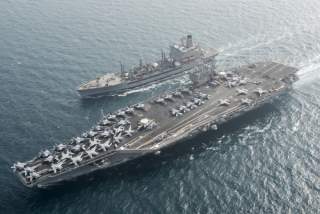The Pentagon's Readiness Vortex
“We have a lot of ‘not availables’ in the force right now."
In sum, “doing more with less” has been the motto of the post-Cold War military, and it should be no surprise that the result is not simply diminished capacity and capability but diminished readiness. A force that is too small can never catch up with demand. As the Army’s Training and Doctrine Command admitted in a recent assessment: the “Army is too small to protect the Nation and its interests abroad and to uphold U.S. international obligations around the world.” The problems of preparedness are not apparent in small, short engagements: the invasions of Afghanistan and Iraq in 2001 and 2003 were lopsided affairs. But these shortfalls of capacity crippled both post-invasion efforts. And, as the service chiefs make plain, taking on any tougher adversary now would reveal shortfalls in capability. And that is the difference between an incomplete victory and real defeat.
Thomas Donnelly, a defense and security policy analyst, is the codirector of the Marilyn Ware Center for Security Studies at the American Enterprise Institute. He is the author, coauthor, and editor of numerous articles, essays, and books, includingOperation Just Cause: The Storming of Panama and Clash of Chariots: A History of Armored Warfare. He is currently at work on Empire of Liberty: The Origins of American Strategic Culture. From 1995 to 1999, he was policy group director for the House Committee on Armed Services. Donnelly also served as a member of the US-China Economic and Security Review Commission and is a former editor of Armed Forces Journal, Army Times, and Defense News.
This story originally appeared in the Hoover Insitutions’ Strategika
Image: U.S. Navy

